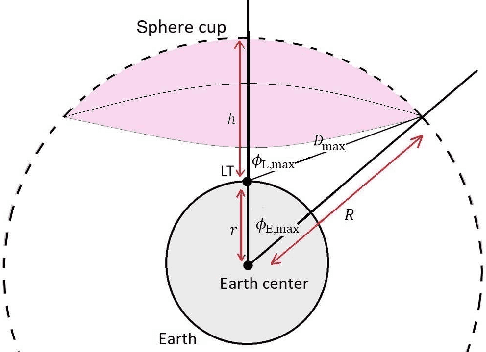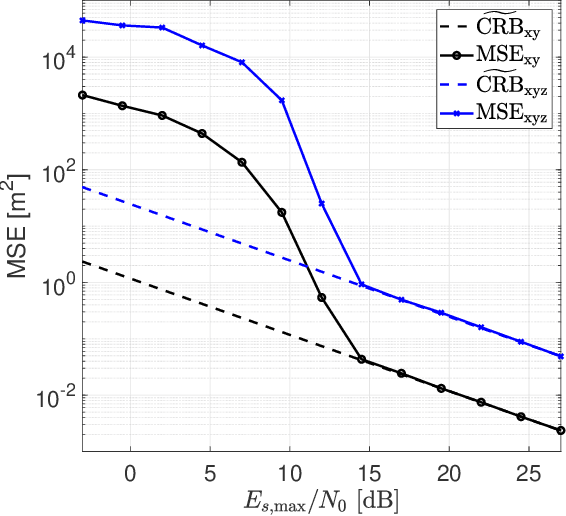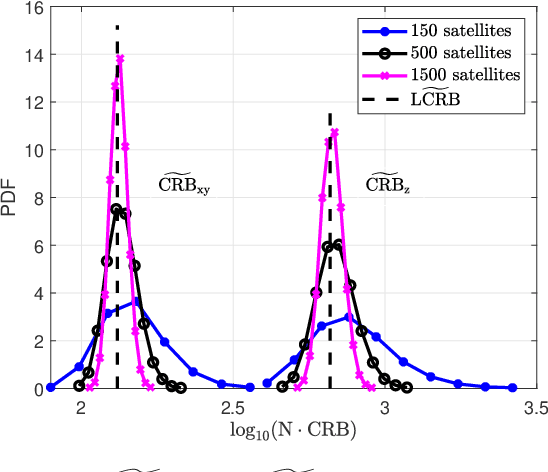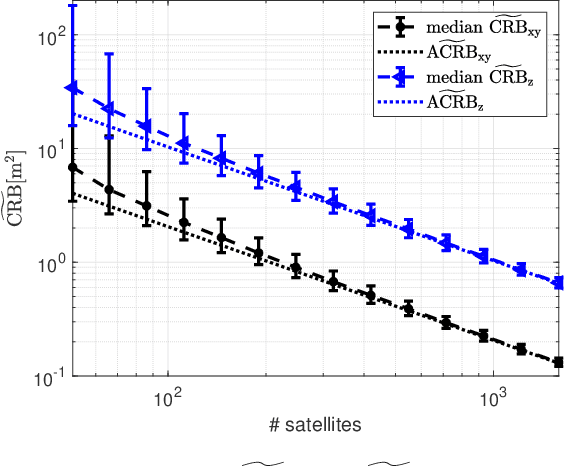Itsik Bergel
Asymptotic Analysis of the Downlink in Cooperative Massive MIMO Systems
Sep 25, 2023



Abstract:We consider the downlink of a cooperative cellular communications system, where several base-stations around each mobile cooperate and perform zero-forcing to reduce the received interference at the mobile. We derive closed-form expressions for the asymptotic performance of the network as the number of antennas per base station grows large. These expressions capture the trade off between various system parameters, and characterize the joint effect of noise and interference (where either noise or interference is asymptotically dominant and where both are asymptotically relevant). The asymptotic results are verified using Monte Carlo simulations, which indicate that they are useful even when the number of antennas per base station is only moderately large. Additionally, we show that when the number of antennas per base station grows large, power allocation can be optimized locally at each base station. We hence present a power allocation algorithm that achieves near optimal performance while significantly reducing the coordination overhead between base stations. The presented analysis is significantly more challenging than the uplink analysis, due to the dependence between beamforming vectors of nearby base stations. This statistical dependence is handled by introducing novel bounds on marked shot-noise point processes with dependent marks, which are also useful in other contexts.
Non-Linear Relay Optimization using Deep-Learning tools
Aug 23, 2023Abstract:Widespread deployment of relays can yield a significant boost in the throughput of forthcoming wireless networks. However, the optimal operation of large relay networks is still infeasible. This paper presents two approaches for the optimization of large relay networks. In the traditional approach, we formulate and solve an optimization problem where the relays are considered linear. In the second approach, we take an entirely new direction and consider the true non-linear nature of the relays. Using the similarity to neural networks, we leverage deep-learning methodology. Unlike previous applications of neural networks in wireless communications, where neural networks are added to the network to perform computational tasks, our deep relay optimization treats the relay network itself as a neural network. By exploiting the non-linear transfer function exhibited by each relay, we achieve over 15dB gain compared to traditional optimization methods. Moreover, we are able to implement part of the network functionality over the relay network. Our findings shed light on the potential of deep relay optimization, promising significant advancements in future wireless communication systems.
Network Optimization -- Using Relays as Neurons
Jun 25, 2023Abstract:We consider the optimization of a network with amplify-and-forward relays. Observing that each relay has a power limit, and hence a non-linear transfer function, we focus on the similarity between relay networks and neural networks. This similarity allows us to treat relays as neurons, and use deep learning tools to achieve better optimization of the network. Deep learning optimization allows relays to work in their non-linear regime (and hence increase their transmission power) while still avoiding harmful distortion. Moreover, like neural networks, which can implement almost any functionality, we can take advantage of the non-linearities and implement parts of the received functionalities over the relay network. By treating each relay element as a node in a deep neural network, our optimization results in huge gains over traditional relay optimization, and also allows the use of simpler receivers.
Pseudo channel reciprocity in FDD satellite channels
May 02, 2023



Abstract:Channel reciprocity can significantly reduce the overhead of obtaining channel-state information at the transmitter (CSIT). However, true reciprocity only exists in time division duplex (TDD). In this paper, we propose a novel tracking method that exploits implicit reciprocity in FDD line-of-sight (LOS) channels as in low-earth-orbit (LEO) satellite communication (SatCom). This channel reciprocity, dubbed pseudo-reciprocity, is crucial for applying multiple-user multiple-input multiple-output (MU-MIMO) to SatCom, which requires CSIT. We consider an LEO SatCom system where multiple satellites communicate with a multi-antenna land terminal (LT). In this innovative method, the LT can track the downlink channel changes and use them to estimate the uplink channels. The proposed method achieves precoding performance that is comparable to precoding with full CSIT knowledge. Furthermore, the use of pseudo reciprocity typically requires only initial CSIT feedback when the satellite rises. Over very long periods of time, pseudo reciprocity can fail as a result of phase ambiguity, which is referred to as cycle slip. We thus also present a closed-form approximation for the expected time until cycle slip, which indicates that in normal operating conditions, these cycle slips are extremely rare. Our numerical results provide strong support for the derived theory.
Asymptotic Performance of TDOA Estimation using Satellites
Jun 02, 2021



Abstract:We present novel lower bounds on the localization error using a network of satellites randomly deployed on a sphere around Earth. Our new analysis approach characterizes the localization performance by its asymptotic behavior as the number of satellites gets large while assuming a dense network. Using the law of large numbers, we derive closed-form expressions for the asymptotic Cramer Rao bound (CRB) from which we draw valuable insights. The resulting expressions depend solely on the network statistics and are not a function of a particular network configuration. We consider two types of estimators. The first uses the exact statistical model, and hence employs both timing and amplitude information. The second estimator ignores the amplitudes and hence uses only time difference of arrival (TDOA) information. The asymptotic CRB indicates that for practical system setup, a TDOA estimator approaches the performance of the ideal estimator. For both estimators, the localization accuracy improves as satellites get closer to Earth. The latter finding is essential in light of the proliferation of low-Earth-orbit (LEO) satellites and motivates a further study of localization-performance in such networks. Besides, we show that the vertical localization accuracy is lower than the horizontal accuracy and is also more sensitive to the receiver field-of-view.
 Add to Chrome
Add to Chrome Add to Firefox
Add to Firefox Add to Edge
Add to Edge